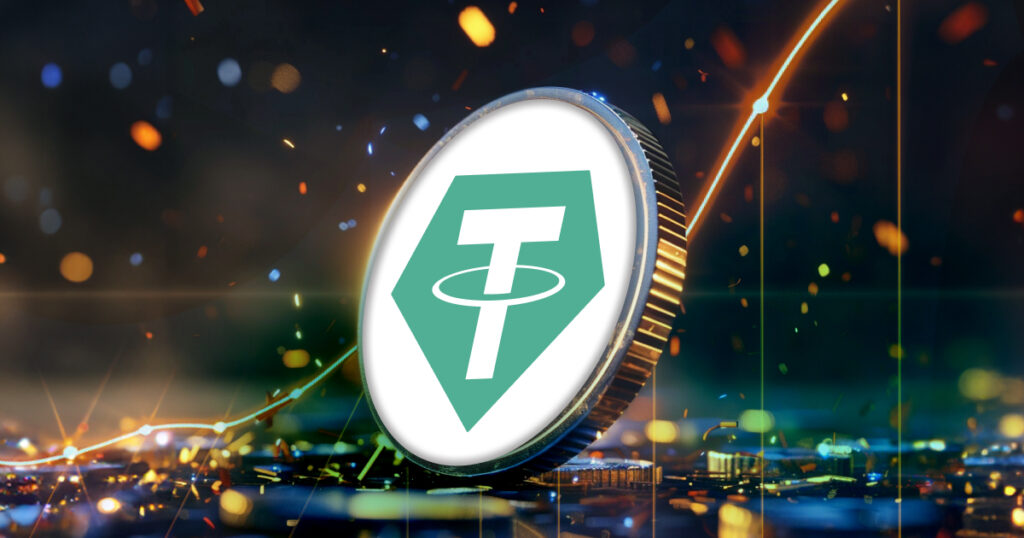What Is Tether (USDT) And How Does It Work?

Tether (USDT) has become one of the most well-known and common stablecoins in the crypto market. Due to its consistency and ability to keep a consistent price versus the US dollar, it has become extensively used. However, what is Tether and how does it operate? In this article, we’ll dig into Tether’s ins and outs to examine how it came to dominate the crypto market.
About Tether (USDT)
Tether is a cryptocurrency that is pegged to the US dollar at a 1:1 ratio. To put it simply, a one-to-one exchange rate exists between the US dollar and the cryptocurrency Tether. An equivalent number of US dollars are held in reserve for each USDT that is in use. Tether is therefore a great choice for traders who wish to steer clear of the volatility sometimes linked to other crypto because its value is intended to be constant.
Tether was founded in 2014 by a group of Hong Kong-based entrepreneurs. The objective was to develop a crypto that would enable quick currency exchange without the use of existing financial institutions. The intention was to create a more stable and secure currency that would be less susceptible to fluctuation as compared to existing crypto.
How Does Tether (USDT) Work?
Tether’s fundamental characteristic is that it is backed by actual money held in reserve. This implies that when someone purchases USDT, they are basically purchasing a token representing a certain quantity of US dollars kept in a bank account.
To achieve its aim of keeping a constant value, Tether employs a two-layer architecture. The Tether platform, which is constructed on top of the Bitcoin or Ethereum blockchain, is the initial layer. The second layer is the Tether reserve, which houses the US funds used to back Tether. When a user purchases USDT, the Tether platform creates a new token and transfers it to the buyer. Simultaneously, the US funds used to support the new coin are transferred to the Tether reserve.
Tether works in a rather easy manner. Tether Limited, the corporation behind USDT, has a US dollar reserve in a bank account. When somebody wishes to buy USDT, they transfer money to Tether Limited’s bank account. Tether Limited produces an identical quantity of USDT tokens and transfers them to the buyer’s digital wallet in return. When somebody wants to exchange their USDT for dollars, the procedure is reversed. They return their USDT tokens to Tether Limited in exchange for an equivalent quantity of US dollars in the buyer’s bank account.
Concerns Surrounding Tether
While Tether has grown in popularity, it is not without controversy. One of the most significant problems about Tether is whether it is entirely supported by US currency. There have been doubts that Tether Limited does not have the reserves it claims, which might lead to a drop in the value of USDT.
Tether Limited has been attempting to boost transparency surrounding its reserves in response to these concerns. The corporation has engaged an accounting firm to do regular audits of its reserve holdings, and it has also produced quarterly reports outlining the status of its reserves. Despite its controversy, Tether remains a significant participant in the world of crypto trading. Its dependability and simplicity of use have made it a preferred choice among traders.
Tether (USDT) or USD Coin (USDC)?
Tether (USDT) and USD Coin (USDC) are both stablecoins whose value is pegged to the US dollar. There are various distinctions between the two that may make one more appealing to specific users than the other.
1. Backing
USDT and USDC both claim to be backed 1:1 by US dollars kept in reserve. Circle, a regulated financial services corporation, issues USDC, and its reserve holdings are audited regularly by a third-party accounting firm. Tether, on the contrary, has been the subject of significant debate over the credibility of its reserve holdings.
2. Transparency
The USDC is more transparent than the USDT. Circle publishes on USDC’s reserve holdings and transaction activity on a regular basis, and its issuer, Circle, is a regulated financial services corporation in the United States. Tether, on the other hand, has been chastised for its lack of transparency and has been accused of manipulating the market.
3. Platform
USDT is more extensively utilized by traders and investors since it is offered on a broader selection of crypto exchanges. However, USDC is only available on a limited number of exchanges, despite the fact that it is frequently utilised in the crypto market.
To summarize, USDT and USDC are both stablecoins that are meant to give a stable value similar to the US dollar. The decision between the two will be determined by your priorities and preferences.
Final Thoughts
All in all, stablecoins like Tether are expected to continue to play a key role in the crypto ecosystem. The need for stable and credible crypto will only grow as more institutional investors and traders enter the market. As the crypto industry grows and evolves, we may also see more innovation in the stablecoin area, such as the creation of stablecoins backed by other assets like gold or fiat currencies.
Disclaimer: Any opinion shared in this article is strictly the views and opinions of the author and should not be construed as financial advice. Flipster makes no judgment on the projects or the content uploaded.